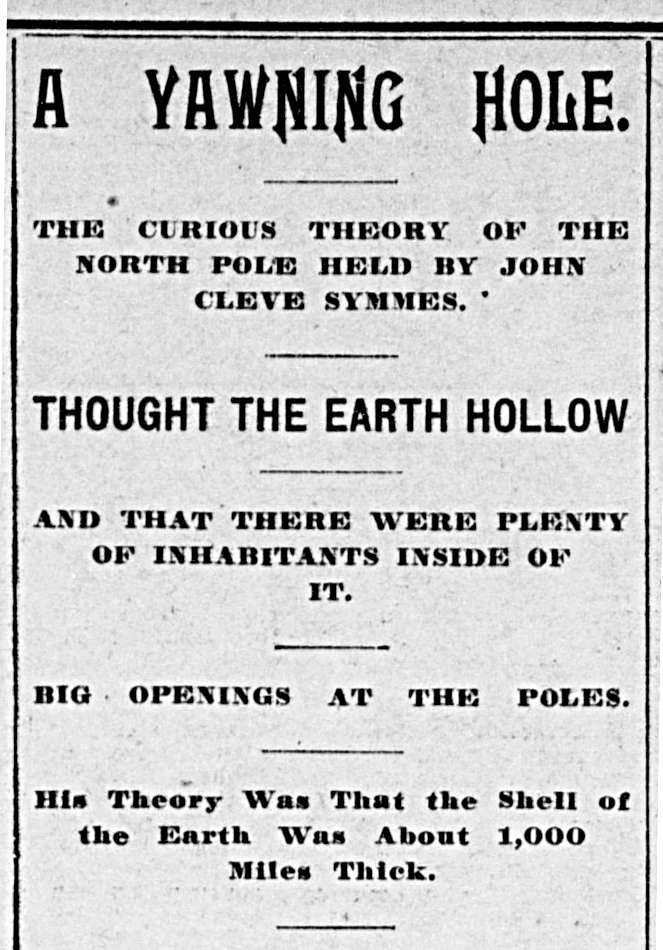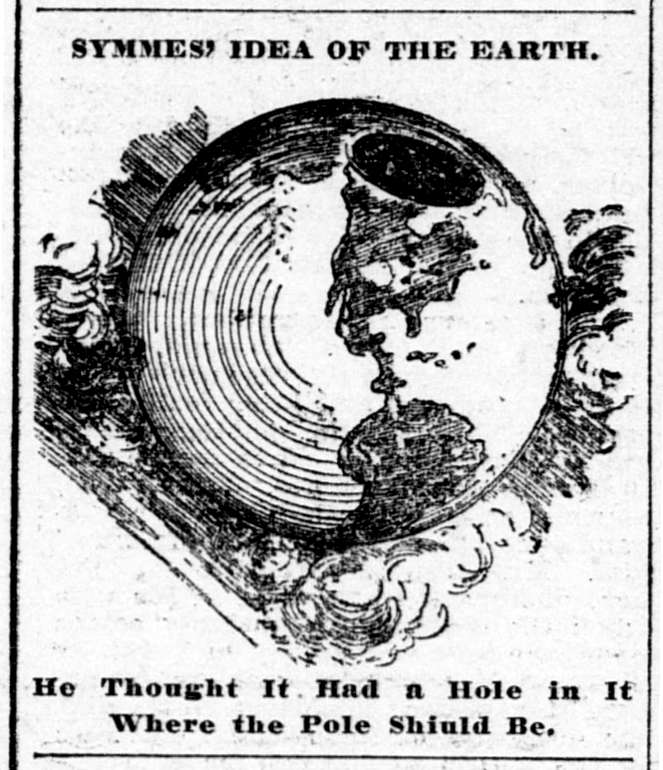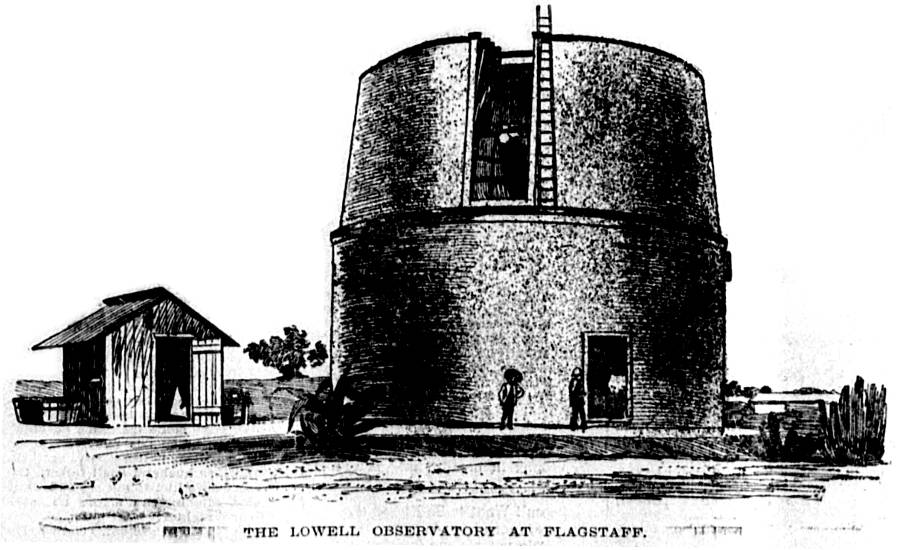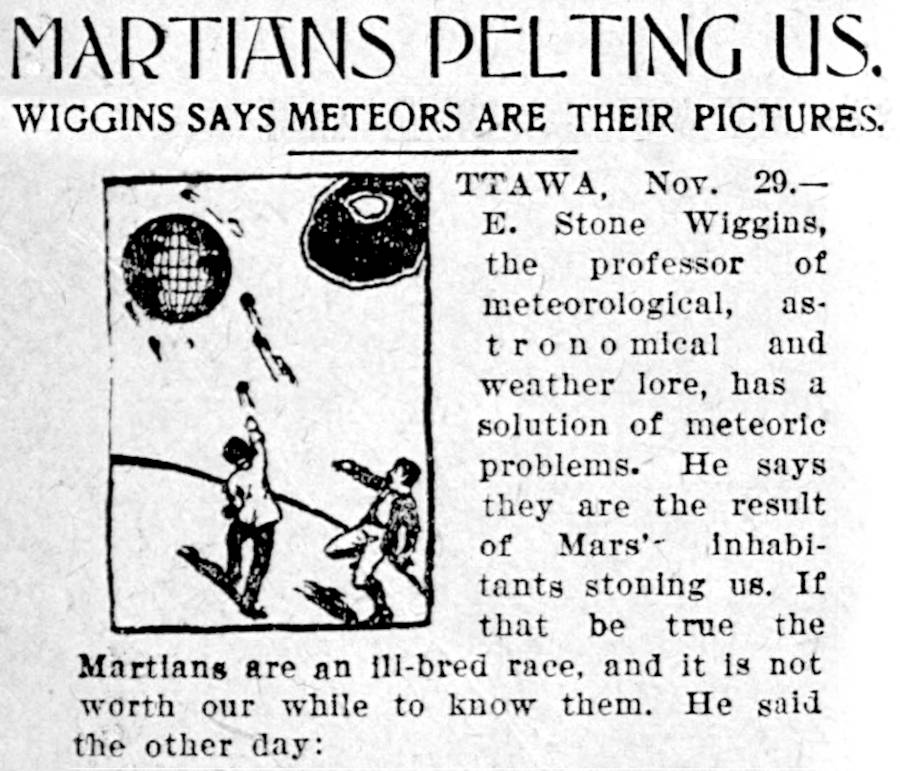
TTAWA, Nov. 29. – E. Stone Wiggins, the professor of meteorological, astronomical and weather lore, has a solution of meteoric problems. He says they are the result of Mars’ inhabitants stoning us. If that be true the Martians are an ill-bred race, and it is not worth our while to know them. He said the other day:
“Our earth – and probably all planets – is surrounded by a ring of floating stones. This ring is much broken, there being parts of the ring where there are no stones. Some are very large, but the greater number small. The flat part of direction of this ring does not lie exactly in the ecliptic, or they would be instantly crossing the sun’s disk. The ring sways sometimes and they are seen on the sun’s orb, and are what astronomers call ‘sun spots.’ The orbits of our two moons, like this ring, are inclined to the ecliptic, and hence, like these stones, only now and then come between us and the sun, when we say the sun is eclipsed.
Continue reading “Martians Pelting Us!”
Tag: 1898
Lowell Observatory, 1898
Edison’s Conquest of Mars, 1898
Edison’s Conquest of Mars was an illustrated serial story that started its weekly publication on Sunday February 4th, 1898 and ran through April 10th, 1898 (later published in book form in 1947). The novel was an unauthorized sequel to H.G. Wells’ “War of the Worlds”
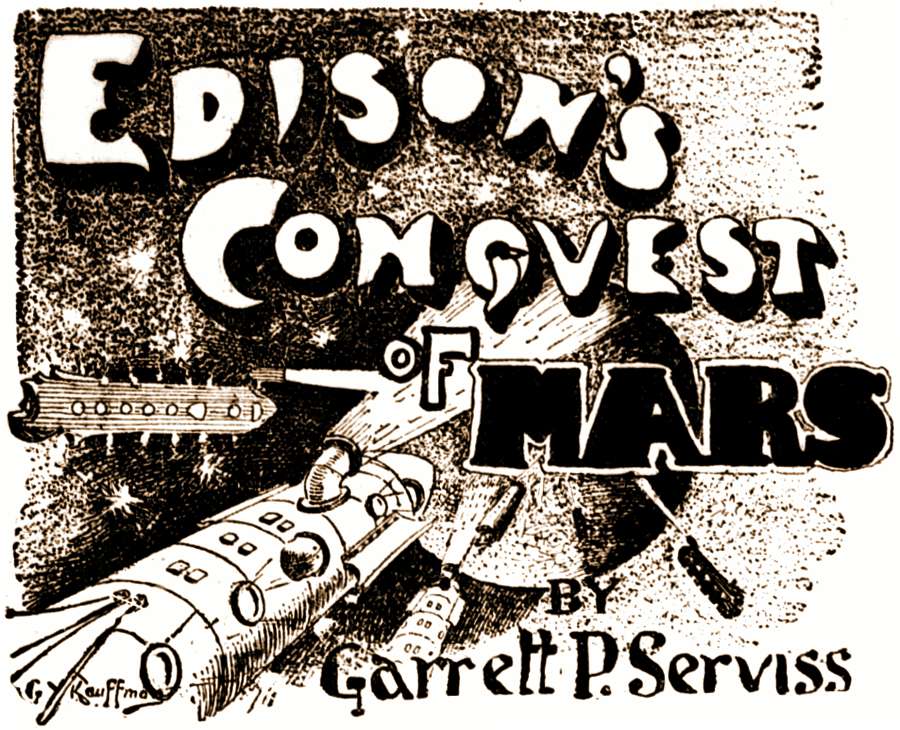 If you feel like reading the story, it is available at archive.org
If you feel like reading the story, it is available at archive.org
Air Warship, 1898
A Hoboken (N. J.) inventor submits plans for an air warship which he thinks would be most serviceable in tho event of war. It is 150 feet Iong and 50 feet in diameter. Above it is attached horizontally an egg shaped balloon of the same dimensions, capable of holding 295,000 cubic feet of gas, which is manufactured from coal oil by an apparatus in the ship. At either side and on the top of the ship are propellers operated by a gas engine. These are controlled by a wheel. To assist the propellers in steering, adjustable fans are attached on each side. The ship is made of aluminium and is inclosed. The inventor says it will float in water, and wheels attached to its bottom can be operated for traveling on land. He asserts it is capable of holding five men besides an extra weight of from I,200 to 1,300 pounds. Its entire weight is 9,500 pounds. The cost of constructing it was $50,000.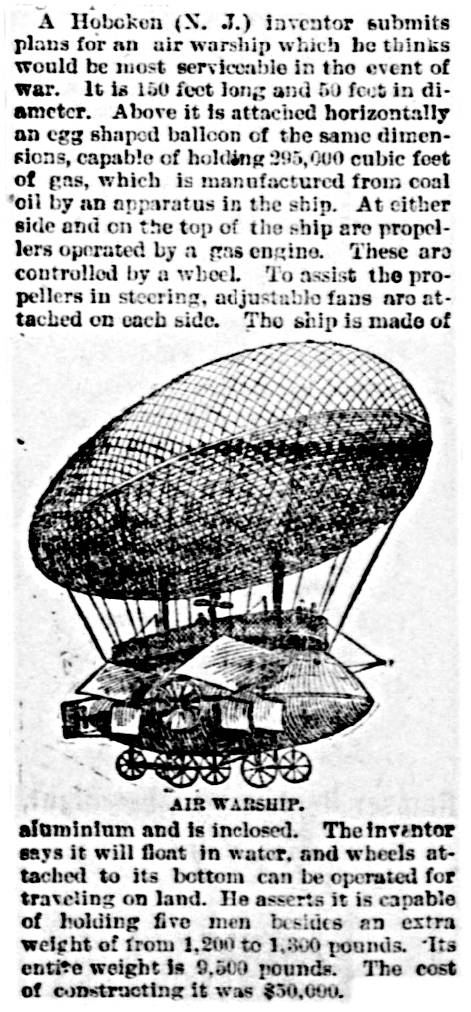
The Yawning Hole, 1896
Article from the St. Paul Daily Globe., March 08, 1896, strangly linking the absurdity of Symmes’ theory about a hollow earth with a new theory that the American nostril was becoming smaller with each generation, and that certain doctors feared Americans were becoming a nation of “Mouth Breathers.” Their theory to correct the problem was “to have various parts of the nasal partition cut, sawed or chiseled out… as to make larger apertures for breathing.”
